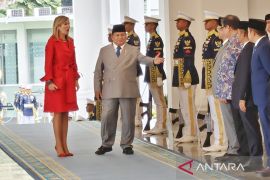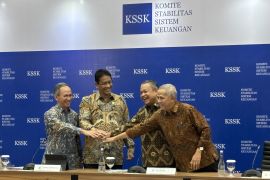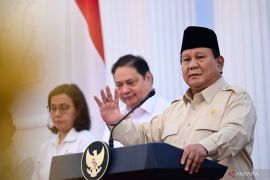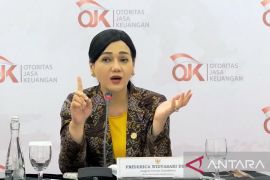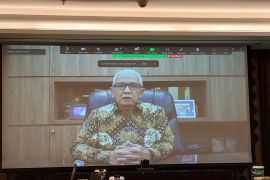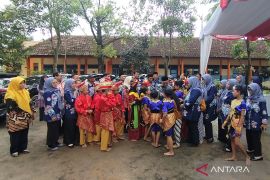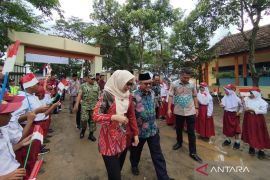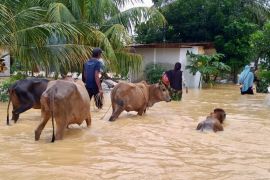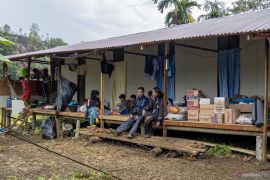Financial inclusion is defined as a condition when every citizen has access to various formal financial services on time; services that are smooth, safe, as well as affordable, and based on needs.Jakarta (ANTARA News) - Indonesia is now developing a financial inclusiveness program to provide its population with wide access to financial resources as part of its efforts to facilitate the peoples economic activities at the grass root level.
Through this scheme, the government has set a target to cover 75 percent of the countrys adult population with financial inclusiveness program by 2019.
Presidential Regulation No. 82 Year of 2016 on National Financial Inclusion strategy set a target that by 2018 about 75 percent of the population should have access to formal financial services.
Financial inclusion is defined as a condition when every citizen has access to various formal financial services on time; services that are smooth, safe, as well as affordable, and based on needs.
To achieve the financial inclusiveness target, the government has prepared five supporting pillars, namely financial education, peoples property right, inter-mediation facility and financial distribution channel, financial service in the government sector and consumer protection.
A survey revealed that the formal financial inclusion level in a number of provinces in eastern Indonesia is relatively high.
According to the Survey on Financial Inclusion Access (SOFIA) which is initiated by Indonesia, Australia and Switzerland, financial inclusiveness program has covered 72 percent of adult population in East Java, West Nusa Tenggara (NTB), East Nusa Tenggara Timor (NTT) and South Sulawesi.
They used formal financial services of which 41 percent are offered by banks and 31 percent by formal non bank institutions.
"Although it is carried out only in four provinces, the program is expected to improve the financial behaviors of some of the Indonesian people," Minister of National Development Planning/Head of National Development Planning Board (PPN/Bappenas) Bambang P.S. Brodjonegoro, said during the launch of SOFIA in Jakarta on Monday (May 22).
Interviews conducted by SOFIA were done in 2016 in four provinces with the number of respondents reaching 20 thousand individuals. The result of the SOFIA survey indicated that 41 percent of the respondents used the services provided by banks. Only half of them have bank accounts, however.
Based on the SOFIA, about 57 percent of the population said they saved or set some amount of their money for the next 12 months. Most of those who saved (39 percent) were still financially excluded because they saved money in the form of cash at home, or buying goods that could be sold later.
People in the four provinces save for the sake of covering cost which is related to their basic needs, paying costs and school expenses of their children. They also save for emergency needs.
Brodjonegoro viewed the SOFIA as meeting the needs for data and for gathering information useful for formulating policies needed to reach the financial inclusion target.
"Without credible information and analysis on the Indonesian peoples financial condition, notably those who are not yet covered by banks, it would be difficult to design an approach which is right on target," the minister said.
A survey conducted by the World Bank in 2014 indicated that only about 37 percent of the Indonesian population have bank accounts, 27 percent have formal saving and 13 percent others have formal loans.
Another survey by the Financial Service Authority (OJK) in 2016 showed that 28.9 percent of adult population were well informed of banks products. According to the OJK, the target to cover 75 percent of the population in the financial inclusion program must be supported with digitization of economy.
The expansion of financial inclusiveness must be supported with economic digitization and available technology, OJK Chief Commissioner Muliaman Hadad noted. "The telecommunication infrastructure network is still not adequate in Eastern Indonesian regions. Focusing on the telecommunication-based transactions in eastern Indonesian regions will need infrastructure support," he stated.
Hadad appreciated the governments commitment to build holistic corridors to overcome telecommunications obstacles, one of which is through the utilization of satellites. This is expected to cover the blind spots, so that financial transactions can be carried out.
Creative and innovative steps should also be taken as a breakthrough to improve financial access while waiting for the infrastructure development process.
"Two months ago, I inaugurated a mobile-service ship similar to mobile banks, which will provide services moving from one island to another. The ship has a cashier counter, credit analysis and other support," he revealed.
Therefore, according to Minister Brodjonegoro, financial technology (fintech) is expected to be a solution to the challenges faced by the financial system in the country.
"We view fintech as one of the strategic elements for realizing financial inclusion and creating equitable development for the poor and vulnerable, who are unable to access formal financial services," he noted.
In the National Mid-Term Development Plan (RPJMN) of 2015-2019, inclusive financing has become the governments focus to achieve economic independence by driving strategic sectors of the domestic economy.
The goal is to increase public access to formal financial services within an inclusive and equitable economic development framework.
In 2016, the countrys financial literacy index was recorded at 29.66 percent, with the financial inclusion index of 67.82 percent.
The government continues to make efforts for realizing the financial inclusion index target of 75 percent by 2019.
However, the Financial Services Authority recorded that only 67 percent of the adults in 2016 had access to formal financial institutions.(*)
Reporter: Andi Abdussalam
Editor: Heru Purwanto
Copyright © ANTARA 2017
